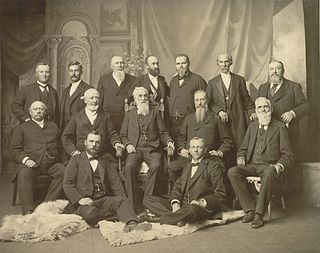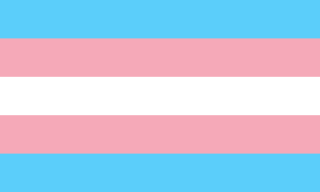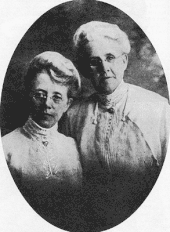
In the Church of Jesus Christ of Latter-day Saints, the Quorum of the Twelve Apostles is one of the governing bodies in the church hierarchy. Members of the Quorum of the Twelve Apostles are apostles, with the calling to be prophets, seers, and revelators, evangelical ambassadors, and special witnesses of Jesus Christ.
Sexuality has a prominent role within the theology of the Church of Jesus Christ of Latter-day Saints, which teaches that gender is defined in the premortal existence, and that part of the purpose of mortal life is for men and women to be sealed together, forming bonds that allow them to progress eternally together in the afterlife. It also teaches that sexual relations within the framework of opposite-sex marriage are healthy, necessary, and ordained of God.

All homosexual sexual activity is condemned as sinful by the Church of Jesus Christ of Latter-day Saints in its law of chastity, and the church teaches that God does not approve of same-sex marriage. Adherents who participate in same-sex sexual behavior may face church discipline. Members of the church who experience homosexual attractions, including those who self-identify as gay, lesbian, or bisexual remain in good standing in the church if they abstain from same-sex marriage and any homosexual sexual activity or sexual relationships outside an opposite-sex marriage. However, all people, including those in same-sex relationships and marriages, are permitted to attend the weekly Sunday meetings.
Mormons have both used and been subjected to significant violence throughout much of the religion's history. In the early history of the United States, violence was used as a form of control. Mormons were violently persecuted and pushed from Ohio to Missouri, from Missouri to Illinois and from Illinois, they were pushed west to the Utah Territory. There were incidents of massacre, home burning and pillaging, followed by the death of their prophet, Joseph Smith. Smith died from multiple gunshot wounds from a lynch mob at a jail in Carthage, Illinois; Smith had defended himself with a small pistol smuggled to him by church leader Cyrus Wheelock and he was then shot while trying to flee from a window. There were also notable incidents in which Mormons perpetrated violence. Under the direction of Mormon prophets and apostles, the Mormon burned and looted Davies County, attacked and killed a member of the Missouri state militia, and carried out an extermination order on the Timpanogos. Other Mormon leaders led the Mountain Meadows Massacre, Battle Creek massacre, and Circleville Massacre. Mormons have also been a major part in several wars, including the 1838 Mormon War, Walker War and Black Hawk War.
The law of adoption was a ritual practiced in temples of the Church of Jesus Christ of Latter-day Saints between 1846 and 1894 in which men who held the priesthood were sealed in a father–son relationship to other men who were not part of nor even distantly related to their immediate nuclear family.
The Church of Jesus Christ of Latter-day Saints has been subject to criticism and sometimes discrimination since its inception.

Possibly as early as the 1830s, followers of the Latter Day Saint movement, were practicing the doctrine of polygamy or "plural marriage". After the death of church founder Joseph Smith, the doctrine was officially announced in Utah Territory in 1852 by Mormon leader Brigham Young. The practice was attributed posthumously to Smith and it began among Mormons at large, principally in Utah where the Church of Jesus Christ of Latter-day Saints had relocated after the Illinois Mormon War.
Dean Cornell Jessee is a historian of the early Latter Day Saint movement and leading expert on the writings of Joseph Smith Jr.

The following outline is provided as an overview of and a topical guide to the Church of Jesus Christ of Latter-day Saints.

Transgender people and other gender minorities currently face membership restrictions in access to priesthood and temple rites in the Church of Jesus Christ of Latter-day Saints —Mormonism's largest denomination. Church leaders have taught gender roles as an important part of their doctrine since its founding. Only recently have they begun directly addressing gender diversity and the experiences of transgender, non-binary, intersex, and other gender minorities whose gender identity and expression differ from the cisgender norm.
This is a bibliography of works on the Latter Day Saint movement.
This is a timeline of LGBT Mormon history in the first half of the 20th century, part of a series of timelines consisting of events, publications, and speeches about LGBTQ+ individuals, topics around sexual orientation and gender minorities, and the community of members of the Church of Jesus Christ of Latter-day Saints. Although the historical record is often scarce, evidence points to queer individuals having existed in the Mormon community since its beginnings. However, top LDS leaders only started regularly addressing queer topics in public in the late 1950s. Since 1970, the LDS Church has had at least one official publication or speech from a high-ranking leader referencing LGBT topics every year, and a greater number of LGBT Mormon and former Mormon individuals have received media coverage.
This is a timeline of LGBT Mormon history in the 2020s, part of a series of timelines consisting of events, publications, and speeches about LGBTQ+ individuals, topics around sexual orientation and gender minorities, and the community of members of the Church of Jesus Christ of Latter-day Saints.

The Church of Jesus Christ of Latter-day Saints has been involved with many pieces of legislation relating to LGBT people and their rights. These include playing an important role in defeating same-sex marriage legalization in Hawaii, Alaska, Nebraska, Nevada, California, and Utah. The topic of same-sex marriage has been one of the church's foremost public concerns since 1993. Leaders have stated that it will become involved in political matters if it perceives that there is a moral issue at stake and wields considerable influence on a national level. Over a dozen members of the US congress had membership in the church in the early 2000s. About 80% of Utah state lawmakers identied as Mormon at that time as well. The church's political involvement around LGBT rights has long been a source of controversy both within and outside the church. It's also been a significant cause of disagreement and disaffection by members.
This is a timeline of LGBT Mormon history in the 1950s, part of a series of timelines consisting of events, publications, and speeches about LGBTQ+ individuals, topics around sexual orientation and gender minorities, and the community of members of the Church of Jesus Christ of Latter-day Saints. Although the historical record is often scarce, evidence points to queer individuals having existed in the Mormon community since its beginnings. However, top LDS leaders only started regularly addressing queer topics in public in the late 1950s. Since 1970, the LDS Church has had at least one official publication or speech from a high-ranking leader referencing LGBT topics every year, and a greater number of LGBT Mormon and former Mormon individuals have received media coverage.
This is a timeline of LGBT Mormon history in the 1960s, part of a series of timelines consisting of events, publications, and speeches about LGBTQ+ individuals, topics around sexual orientation and gender minorities, and the community of members of the Church of Jesus Christ of Latter-day Saints. Although the historical record is often scarce, evidence points to queer individuals having existed in the Mormon community since its beginnings. However, top LDS leaders only started regularly addressing queer topics in public in the late 1950s. Since 1970, the LDS Church has had at least one official publication or speech from a high-ranking leader referencing LGBT topics every year, and a greater number of LGBT Mormon and former Mormon individuals have received media coverage.
This is a timeline of LGBT Mormon history in the 1970s, part of a series of timelines consisting of events, publications, and speeches about LGBTQ+ individuals, topics around sexual orientation and gender minorities, and the community of members of the Church of Jesus Christ of Latter-day Saints. Although the historical record is often scarce, evidence points to queer individuals having existed in the Mormon community since its beginnings. However, top LDS leaders only started regularly addressing queer topics in public in the late 1950s. Since 1970, the LDS Church has had at least one official publication or speech from a high-ranking leader referencing LGBT topics every year, and a greater number of LGBT Mormon and former Mormon individuals have received media coverage.
This is a timeline of LGBT Mormon history in the 1980s, part of a series of timelines consisting of events, publications, and speeches about LGBTQ+ individuals, topics around sexual orientation and gender minorities, and the community of members of the Church of Jesus Christ of Latter-day Saints. Although the historical record is often scarce, evidence points to queer individuals having existed in the Mormon community since its beginnings. However, top LDS leaders only started regularly addressing queer topics in public in the late 1950s. Since 1970, the LDS Church has had at least one official publication or speech from a high-ranking leader referencing LGBT topics every year, and a greater number of LGBT Mormon and former Mormon individuals have received media coverage.











